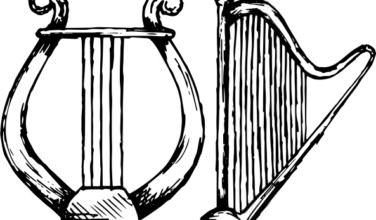About the Lamian War in Ancient Greece
Comments Off on About the Lamian War in Ancient Greece
 The Lamian War, also known as the Hellenic War, was a conflict between 323 BC and 322 BC. Athens and the Aetolian Confederacy sought to free themselves from Macedonian rule as that nation struggled with the death of Alexander the Great. Here’s a look at what the war was all about:
The Lamian War, also known as the Hellenic War, was a conflict between 323 BC and 322 BC. Athens and the Aetolian Confederacy sought to free themselves from Macedonian rule as that nation struggled with the death of Alexander the Great. Here’s a look at what the war was all about:
Origins of the Lamian War
324 BC saw Alexander establishing the Exiles Decree in Greece, allowing any Greek citizen whom had formerly been exiled to return to his home city. Athens and the Aetolian League were most affected:
- The Aetolians has previously occupied Oeniadae, deposing the native populace and restyling the city to their tastes.
- The Aethenians had similarly overtaken and colonized the island Samos.
The Exiles Decreet meant that these peoples had to give Samos and Oeniadae to Macedon. Things weren’t helped with a grain shortage right when Alexander was seeking supplies for his Eastern campaign.
Beginning Stages of the Lamian War
After Alexander’s death in June 323 BC, Macedonia was struggling to find his successor. The Athenians saw this moment as their best chance of breaking Macedonia’s grip over Greece and decided to wage war. Athens made use of 5,000 talents from Harpalus, Alexander’s treasurer, and sent Leosthenes to Taenarum for mercenary recruitment. Leosthenes was ordered to seem as if he was hiring the mercenaries for his personal service, rather than in service to Athens; the goal being to give Athens more preparation time.
After satisfaction with their numbers, the Greek forces advanced, consisting of 10,000 Athenians, 12,000 Aetolians and 3,000 mercenaries. Conversely, Macedonia’s European commander, Antipater, was scrambling to find enough men when most of the Macedonian army was mired within, transitioning to, or leaving Asia. Antipater was forced to engage Grecian forces with 13,000 men and multiple requests for reinforcements. While the Thessalians were initially favorable to Antipater, the Athenians encouraged them to change sides, ultimately forcing the commander to the walled city of Lamia.
The Lamian War is Underway
Lamia was a well-fortified castle of a city, built on an acropolis, which proved unassailable by the Greeks. Further, Leosthenes had been mortally injured while harassing the entrenched Macedonians, causing Athens to withdraw with his death. While Antiphilus was made Leosthenes’ replacement, the Lamian defenses lasted long enough for Antipater’s long-sought reinforcements arrived, 21,500 men, under Leonnatus’ command. While Athens’ navy had engaged Leonnatus’ forces at the Battle of Amorgos, they had failed to stop his advance.
322 BC’s Battle of Crannon was the final nail in the coffin of Greek independence. Antipater had joined up with Leonnatus and Craterus and had harangued the demoralized Athenians with cavalry and hoplite skirmishes. Even though the Greeks had not routed, the situation was recognizably dire enough for them to surrender. The war’s conclusion saw the dissolution of the Athenian government, replaced with a plutocracy limiting citizenship to those owning at least 2,000 drachmas.
While the Lamian War had the potential for great things in Greece, the Lamian Castle proved enough of a campaign barricade to let Macedonia reassert its rule. The Lamian War also marked the end of Greece’s Hellenistic Period.
Categorized in: Ancient Greek History
This post was written by Greek Boston
Share this Greek History Article:





